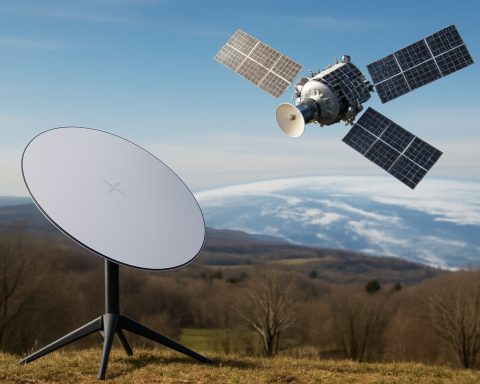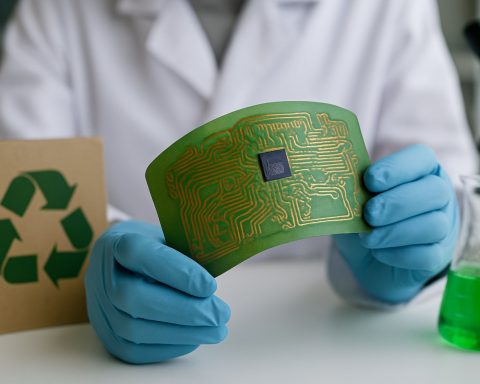- Electric vehicles (EVs) are rapidly expanding in the US, representing 20% of vehicle sales in 2024, driven by environmental concerns and legislative incentives.
- The Clean Vehicle Credit, reshaped by the Inflation Reduction Act of 2022, offers financial incentives for EV buyers and requires precise documentation at the point of sale.
- Eligibility for the credit demands vehicles meet specific standards, including North American assembly and price limits ($80,000 for larger vehicles and $55,000 for smaller ones).
- The credit, worth up to $7,500, is split: half depends on sourcing battery minerals from free trade agreement countries, and the other on using North American components.
- Income caps ensure equitable access, with limits set at $300,000 for married couples filing jointly, $225,000 for heads of households, and $150,000 for single filers.
- Tax software aids in simplifying the credit application, ensuring compliance and allowing consumers to benefit from significant savings with proper knowledge.
Soaring sales of electric vehicles (EVs) paint a vivid picture of the automotive landscape—one fueled by innovation and environmental consciousness. As these electric chariots become a staple on American roads, questions loom about the intricacies of the Clean Vehicle Credit—a crucial puzzle piece in the nation’s climate fight.
Amid the political backdrop, recent legislative shifts, such as the Inflation Reduction Act of 2022, have reframed the rules guiding the Clean Vehicle Credit for EVs purchased between 2023 and 2032. With electric vehicle sales reaching an unprecedented 1.3 million units in 2024, an impressive 7.3% surge from the previous year, the appetite for these eco-friendly vehicles is undeniable. By 2024, EVs commanded an impressive 20% of US vehicle sales, cementing their pivotal role in the future of transportation.
The Clean Vehicle Credit currently remains embedded in the tax code, providing essential financial incentives that drive consumers towards greener choices. This credit, however, dances on a fine line, necessitating precise timing and documentation. Buyers must now clinch the credit at the point of sale, ensuring dealers submit a “time-of-sale” report to the IRS. All transactions require meticulous reporting using Form 8936 during the tax year of vehicle delivery, while income thresholds guard against abuse of this financial boon.
To reap the benefits of this credit, vehicles must conform to stringent standards: they should sport batteries with a capacity exceeding 7 kilowatt hours, have a gross weight under 14,000 pounds, and be assembled within North America. Layered atop these are price caps—$80,000 for larger vehicles like SUVs and $55,000 for sedans and compact cars.
Delving deeper, the credit bifurcates into two halves, steering manufacturers towards domestic resource utilization. To qualify for the first half ($3,750), a significant portion of battery minerals—think lithium and nickel—must come from countries with existing free trade agreements with the U.S., a requirement steadily ramping up each year. Parallelly, the remaining credit hinges on sourcing battery components predominantly from North America, charting a path to 100% domestic compliance by 2029.
Yet, these ambitious targets are not without hurdles. The global dominance of China in mineral refining and component production poses a formidable challenge, potentially bottlenecking the availability of compliant vehicles.
For consumers, tapping into the Clean Vehicle Credit requires more than just driving a compliant vehicle. Personal or business usage must be primary, and income limits ensure equitable access. For married couples filing jointly, the AGI cap sits at $300,000, while heads of households must earn no more than $225,000, and single filers face a ceiling of $150,000. New buyers who overshoot these limits and claimed the credit upfront might face the unwelcome prospect of repayment.
But navigating this complex terrain isn’t entirely daunting. Modern tax software, including dominant players like Intuit TurboTax, equips users with tools to seamlessly integrate the Clean Vehicle Credit into their filings, demystifying the process.
In essence, as America forges a sustainable future on wheels, understanding the intricacies of the Clean Vehicle Credit remains paramount. For prospective EV owners, staying informed empowers them to maximize their benefits while contributing to a cleaner, greener horizon. The key takeaway: knowledge of these evolving policies ensures both compliance and significant savings, heralding a widespread embrace of electric innovation.
Maximize Your Savings: Navigating the New Clean Vehicle Credit for Electric Vehicles
A Deeper Dive into the Clean Vehicle Credit
As the electric vehicle (EV) market continues to gather momentum, understanding the implications and benefits of the Clean Vehicle Credit becomes increasingly crucial. This credit, bolstered by recent legislative changes, serves as a linchpin in promoting greener transportation choices across the United States.
Real-World Use Cases and Market Trends
1. Growth Trends: The surge in EV sales reflects not just a shift in consumer preferences but also foreshadows sustainable growth in the automotive industry. With sales reaching 1.3 million units in 2024, EVs now represent 20% of total U.S. vehicle sales, showcasing a significant market shift towards eco-friendly vehicles.
2. Market Forecast: Analysts predict continued growth due to technological advancements and increased infrastructure investment, such as charging stations and better battery technology.
Features, Specs & Pricing
– Vehicle Requirements: EVs must have batteries exceeding 7 kilowatt hours and must be assembled in North America. Price limitations restrict larger vehicles to below $80,000 and smaller vehicles to below $55,000.
– Income Criteria: The credit is available for single filers with an Adjusted Gross Income (AGI) up to $150,000, heads of households up to $225,000, and married couples filing jointly earn up to $300,000.
Challenges and Controversies
– Global Supply Chain: The reliance on imports for lithium and nickel, especially from countries with complex geopolitical standings, poses a challenge due to China’s dominance in mineral refining. This may affect the availability of vehicles that qualify for the credit.
How-To Steps & Life Hacks
How to Claim the Clean Vehicle Credit:
1. Ensure Vehicle Eligibility: Verify the vehicle meets all specifications such as battery capacity and assembly location.
2. Check Income Limits: Confirm that your AGI falls within the stipulated income caps for eligibility.
3. Dealer Coordination: Ensure the dealer submits a “time-of-sale” report to the IRS to avoid delays.
4. Filing Requirements: Use Form 8936 during tax filing. Utilize tax software like Intuit TurboTax to streamline the process.
Reviews & Comparisons
– Tax Software Tools: Compare popular tax software like TurboTax and H&R Block to find one that simplifies the integration of the Clean Vehicle Credit with your tax return.
Quick Tips for Maximizing Rewards
– Stay Informed: Regularly check for updates on legislative changes impacting the Clean Vehicle Credit. This can enable strategic purchasing decisions.
– Consult with Experts: Work with tax professionals to optimize your tax situation and fully benefit from the credit.
For more information about green initiatives and electric vehicles, you can visit the IRS website.
The Clean Vehicle Credit offers an avenue toward financial savings and environmental stewardship. As the landscape of EVs continues to evolve, staying informed and strategically navigating these incentives can lead to significant benefits.












